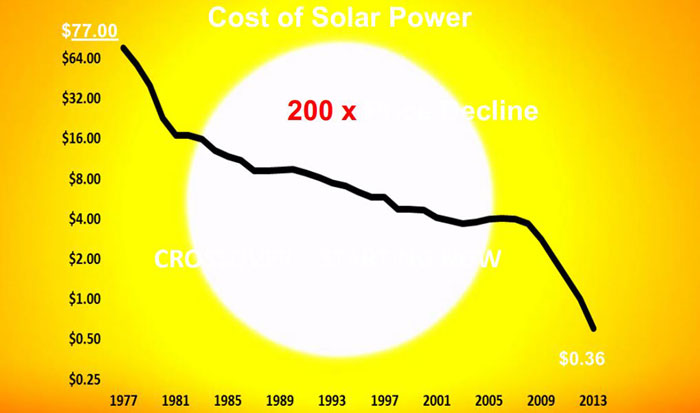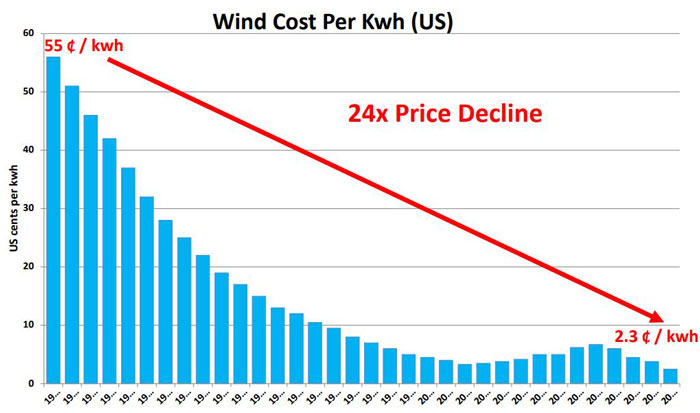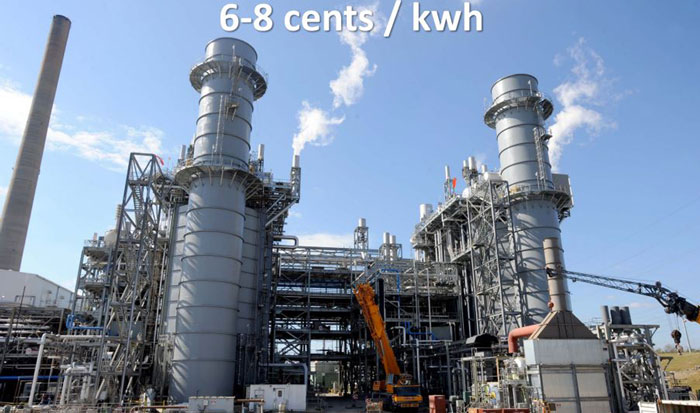RUSERIO SOLAR
Solar
WHO ARE WE
Solar Farms and Seeing the Forest for the Trees
Solar farms are an increasingly popular solution to help combat climate change, and the idea of using clean power is widely accepted.
Compared to other power generation methods they make good neighbours – emitting no emissions or noise. They can be unobtrusive and very flexible in their install sites. This all makes them a more attractive option to communities than just about any other power generation option.
Massachusetts gets most of its energy from natural gas, which means energy prices here are tied to the volatile price of petroleum. Residents here pay a higher percentage of their income for energy than most other states. Solar farms are cost effective because they correlate with greater economies of scale than roof-mounted panels on buildings.
One acre of solar in Massachusetts offsets about 134 tons of CO2 per year per acre, nearly ten times as much as temperate forest lands, which removes 15 tons of CO2 per year per acre.
ABOUT
Siting
Most people can agree that putting solar panels on a capped landfill or a parking lot is a no brainer – and there are even state programs in place in Massachusetts to encourage that. Many arrays have already been built on such sites. Landfills host solar farms in Chicopee, Hudson, Amesbury and there’s an array going up on the decommissioned Mt. Tom Coal Plant in Holyoke, to name just a few projects.
There aren’t many of these so-called brownfield sites left, but we still have a long way to go on Massachusetts’ greenhouse gas reduction targets, so it’s important to evaluate sites that involve tree clearing for solar farm installations.
Massachusetts is both densely populated and heavily forested. It’s the fourth most densely populated state in the US, and has 62% forest cover. According to the Boston Globe, “…nearly 50,000 acres of forest — at a pace of 13 acres a day — between 2005 and 2013…” was used for new housing developments. Any trees cleared for solar projects would not be on conservation land. Solar farms would be hosted on private land designated for agricultural or commercial purposes. If it’s not used for solar, it will probably be used for something else.
The good news is all solar farms, even those that involve cutting down trees, help fight climate change. In fact, solar farms are a more powerful way to fight climate change than trees are. If you compare carbon offset per acre, solar energy wins out.
ABOUT
Land Use
In addition to climate change, we need to consider the impact land use has on the people living there. Forests maintain healthy ecosystems and habitat for wildlife, filter air and water, protect against land erosion, provide a buffer against floods and provide recreational space for residents.
For those of us that want to protect forests, it’s important to look at the big picture – we’ve already seen changes in our temperate forests due to climate change.
This will only get worse in the future – we can expect changes in weather patterns that native species will have trouble adjusting to. If sacrificing a few acres of trees will help preserve our forests, it seems like a worthwhile trade.
Another thing to consider is that we can recover the land used for solar arrays after their useful life has ended. The panels can be replaced, or arrays removed, and forests allowed to return.
Having historically been a heavy industrial use area, Massachusetts has not always been as heavily forested as it is now, with most of the state’s forests only being 80 years old. In the 1800s, Massachusetts had used most of its timber and was down to only 28% forest coverage. We’ve bounced back since then, regenerating the state’s forest.
Finally, if we only built solar farms in wooded areas, just 6,000 acres of solar out of the state’s 3 million acres of trees (0.2%), could supply all of Massachusetts’ power needs.
We’re in a position where we need drastic changes and actionable solutions now if we want to avoid serious climate change. Community solar farms boost the local economy, help regulate energy prices, reduce pollution, and bring cost savings to residents. Most sites for community solar are not on forested land, and proposed arrays would only require a small amount of acreage. That land would offset more carbon with a solar farm than it can now, and it’s better used for solar than for other development. Maybe most importantly, moving to clean energy will help preserve our forests in the long term.
PRIORITIES
Achieving a Climate-neutral
EU Before 2050
The European Commission has positioned the Green Deal at the centre of its policy priorities. The goals have been set: climate-neutrality, zero greenhouse gas emissions, and the complete decarbonisation of the energy sector by 2050.
“The stakes are high”, writes SolarPower Europe CEO Walburga Hemetsberger, “but thus far Commission President Ursula von der Leyen has made good on her promises.”
June 23, 2020 Walburga Hemetsberger, CEO, Solarpower Europe
INFORMATION
What’s Happening?
Unilever's climate goals are the most ambitious of any consumer goods firm in relation to emissions reduction and include plans to put labels on 70,000 products detailing how much greenhouse gas was emitted during their manufacture and shipping, Bloomberg has reported.
The company aims to make its operations and those of its supplier’s net zero by 2039, while investing $1.1bn in climate initiatives over the next decade. In 2010, Unilever pledged to cut emissions from its products by 50% by 2030. The company’s emissions have been falling since 2016.
- On the surface of it, Unilever’s move seems to be a noble one, particularly considering it’s part of a $1.1bn effort to address climate risks and environmental issues. The firm also recently announcedit would use blockchain to help eradicate deforestation from its supply chain.
Labelling products detailing their carbon footprint could, however, be seen as an attempt to pass some of the responsibility for overall emissions and environmental impact onto consumers.
Such an approach wouldn’t be out-of-step among mass consumer companies. Earlier this year, for example, Coca-Cola backed persevering with single-use plastic, citing consumer demand. Rival PepsiCo made similar remarks, stating the use of such packaging was not in itself bad, but that consumers needed to understand how to dispose of, or re-use it, appropriately.
There have been examples of corporates being held accountable for their environmental impact by policymakers, even if it can be argued the fault ultimately lies with the customer. In India, for example, regulators have mandated that consumer goods companies take responsibility for ensuring certain types of packaging are disposed of appropriately.
Some corporates have turned to technology to tackle the issue. In China, for example, Alipay is making use of QR codes and waste-management apps to help residents sort rubbish and deal with overbearing recycling regulations.
Unilever’s labelling efforts, of course, don’t just concern its packaging, but the overall environmental impact of its products. Its approach may alter consumers’ behaviour, lessening demand for problematic products. It may also, however, allow the firm to show its customers are consciously consuming items despite knowing their harm, potentially allowing some of the blame to be shared.
With “carbon labelling” in its infancy, however, some commentators have noted there is not enough evidence to determine whether consumers’ habits will be altered by this approach.
“German federal network agency the Bundesnetzagentur has announced the results of a tender held on June 1 for photovoltaic projects with a generation capacity of 750 kW-10 MW.
With 101 bids lodged that added up to 447.2 MW of capacity, the authority approved 21 projects for 96.3 MW of new capacity. The final prices agreed for the solar power to be generated by the facilities ranged from €0.046-0.0548/kWh for an average €0.0527 that was slightly more expensive than the €0.0518/kWh settled in the previous tender of that type, which assigned 301 MW of capacity.”
“Montana’s second-largest planned solar project, the 150 MW Cabin Creek solar farm, currently being developed by Clenera in Fallon County, is now the largest in the state to move forward with development, after signing a power purchase agreement (PPA) with Basin Electric Power Cooperative.
The PPA is for 15 years, at a reported cost of power under $30/MWh for Basin Electric. Basin Electric is comprised of 141 smaller electric cooperatives, spread across nine states, for a total electric customer base of around 3 million people. More than half of Montana’s 25 in-state electric cooperatives belong to Basin Electric and will receive power from it.
Over the 15-year lifespan of the contract, the Cabin Creek solar farm is expected to generate enough electricity to power 30,000 homes. Outside of the power contract, the project is expected to generate $8 million in property taxes to Fallon County, plus an additional $5 million to the state. It will create about 300 jobs when construction begins in 2022 or early 2023, after which another five will be created for maintaining the project. The installation is expected to come online by the end of 2023.”
ACHIEVING GOALS
Solar energy opportunity
Romania, part of EU.








